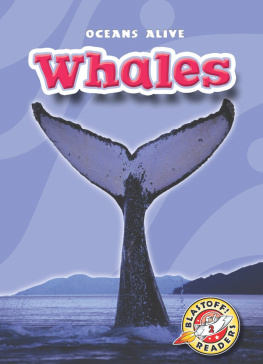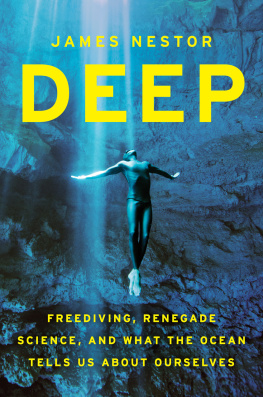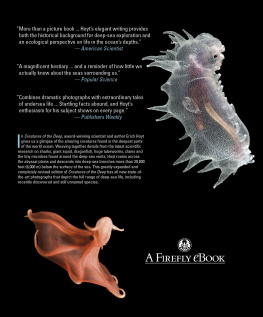Sex in the Sea
Our Intimate Connection with Sex-Changing Fish, Romantic Lobsters, Kinky Squid, and Other Salty Erotica of the Deep
Marah J. Hardt
Illustrated by Missy Chimovitz

St. Martins Press
New York
Thank you for buying this St. Martins Press ebook.
To receive special offers, bonus content, and info on new releases and other great reads, sign up for our newsletters.

Or visit us online at us.macmillan.com/newslettersignup
For email updates on the author, click here.
The author and publisher have provided this e-book to you for your personal use only. You may not make this e-book publicly available in any way. Copyright infringement is against the law. If you believe the copy of this e-book you are reading infringes on the authors copyright, please notify the publisher at: us.macmillanusa.com/piracy .

For Steve, who believes.
Siempre.
It smells like sex. I couldnt shake that some what disturbing thought as I floated at the surface, watching the moonlight glisten off the ever-widening slickthe residue of the nights intimacy. The distinct, musty odor was undeniable. I guess I shouldnt have been so surprised. I had just spent the past two hours watching corals spawn. But that event looked so unlike sex that I never expected the aftermath to smell like it.
As I pulled strands of mucous-y coral goo out of my hair, I caught the eye of the other researchers similarly engaged in de-spawning themselves. We smiled at one another with a knowing look. There is a certain level of bonding that occurs when floating amid the leftovers of one of Natures biggest orgies.
Thats the thing about sex in the sea. It is at once utterly foreign, yet there are hints of the familiarbut only just. For the most part, sex beneath the waves looks nothing like what we think of as intercourse. Thats what happens after several hundred million years of intense battles over who can reproduce the mostevolution gets a little funky.
From the highest reef crests to the deepest trench in the sea, getting laid and not getting eaten are the two biggest concerns for nearly every animal on the planet. Thus Nature invests heavily in the art of both sex and survival. Lifes great purposeto successfully pass along to future generations ones good looks and all the genes that go with itrelies on both skills. But not equally. A deft survivor that lives a long but celibate life loses the evolutionary game; a great lover, adept at attracting and securing a mate, needs only to survive long enough to get the deed done.
In the end, it all comes down to sex.
Thus the mind-boggling array of ways to seal the deal in Nature. And Im not talking Kama Sutra style creative contortionism here. Thats just a bunch of minor postural adjustments. Real sexual innovation occurs in the wilderness, and nowhere are things more wet and wild than in the ocean. After all, thats where sex was invented. Thats where Mother Nature has been practicing her procreative creativity the longest.
Under the sea, the missionary position is in the minority. Even the images of mating animals on land most familiar to usthe neighbors dog aggressively humping your legare outliers. Instead, sex may look like a handshake; an interlocking ring of multiple individuals forming a closed loop of lovers; or it may be a microscopic male squeezing out sperm while living his days inside his giantess mates kidney. Peek below the shimmering surface of the sea and witness worm penis jousting matches, full-moon sex parties, sunset spawning blitzes, and likely the biggest threesome in the world (with the lovers holding their breath the entire time).
Each of these strategies suits the location and the lifestyle of the species: cold, dark, deep-sea love dens versus warm, bright, reefy love nests; the social, vocal pods of whales contrasted with the independent, silent life of sharks; the microscopic quest and size of copepods compared with the epic journeys of giant bluefin tuna; the daily spawning rush of wrasse alongside the once-a-lifetime sex fest of salmon. Every version has been honed to maximize the chance of successful reproduction. Its a salty symphony of sex that ensures the big blue sea stays bountiful year after year, age after age, right up to the present day. Almost.
Over the last century or more, those myriad instruments of sex have started to, well, go a bit off-key. This is bad news not just for horny halibut, but for us as well.
The way marine life gets busy in the deep mattersit matters for food security, human health, coastal development, climate change, and other global issues. Take food security. Nearly three billion people rely on fish as a major source of protein. Half of that fish comes from the sea. To feed that many people requires a lot of fish successfully making a lot of baby fish every year.
But thats not the only reason the sex lives of snapper and sardines are of interest.
Beachgoers and coastal homeowners take note: like the great walls that defended medieval cities, the mighty underwater reefs built by millions of oysters or corals protect and stabilize the shores. These natural barriers break up wave energy, helping to guard the coastline from storms and heavy surges. And because they are living walls, they can growrather than erodeover time, rising even as sea levels do. Lose the reef builders and it is not long before the sand starts slipping back into the sea.
Its energetically expensive for animals to build and maintain those giant blocks of reef. Add to that the energy they now have to spend fighting off ocean acidification, pollution, and invasive species, and there is just not much left to invest in sex. Its like the exhaustion that follows long days at the officesex tends to take a backseat to sleep.
We rely on the rapid reproduction of tiny crustaceans to feed the fish that feed us. We depend on the mass spawning of corals to create the reefs that provide habitat for the millions of species that we use for medicine, food, and simple enjoyment. We rely on the prolific procreation of oysters, clams, and other shellfish to filter and clean our coastal waters. Whether it is finding the next cancer-fighting compound, feeding a growing population, or fueling economies, we depend upon the extraordinary abundance of ocean life to sustain usand that abundance depends upon lots and lots of sex. Without successful sex in the sea, were sunk. Thats why knowing what actually goes on down there matters to us up here.
Studying the sex lives of animals that live far from shore, in places we often cannot go, isnt easy (or cheap). But scientists are getting better at it every day. Just a few years ago we had no idea how many marine species got busy; there were several we didnt even know existed! Today, we are privy to some of their most intimate secrets. Researchers have at their fingertips a far greater tool kit for examining the reproductive acts of ocean inhabitants. These new approaches and technologies have led to an explosion of sciences own literature of salty erotica. From the acrobatic sex positions of deep-sea squid to uncovering how many males (at minimum) a female shark really sleeps with, scientific papers are now brimming with saucy tales.
This book sets out to explore the best of them, bringing this most recent eruption of research out of the lab and into your lap. The stories cover the age-old progression from landing a first date to consummation and concludes with ideas about how to boost successful sex in the sea. Its a bold ride through the red-light districts of the big blue sea that may leave you feeling slightly humbled, but hopefully inspired. After all, sex is the way life replenishesit is what fuels growth and abundance and, over time, diversitynatures insurance policy against the vagaries of the environment. The more we understand sex, the more we can help shepherd this force toward restoring productivity in the sea rather than proving a giant block against it.













